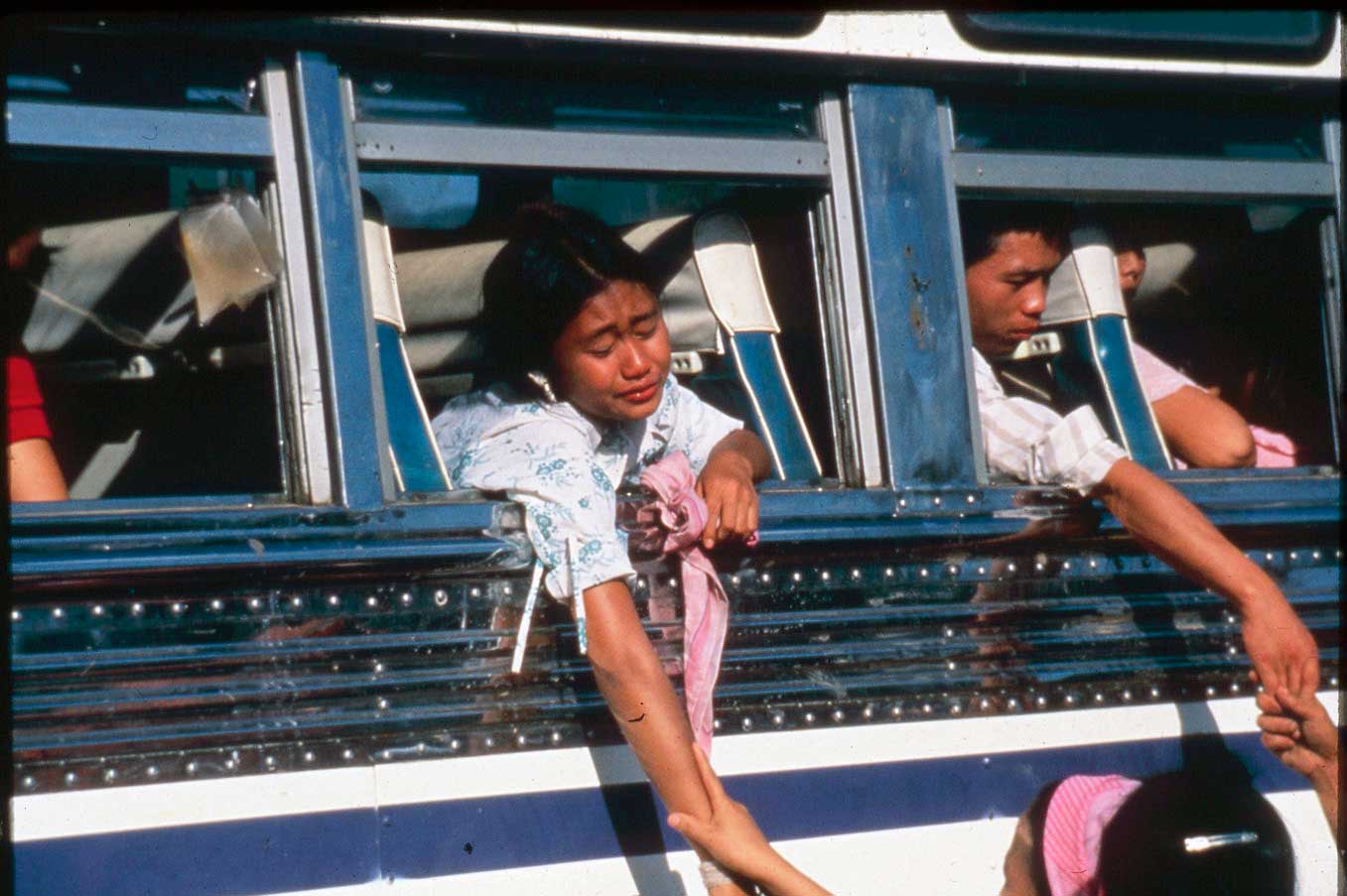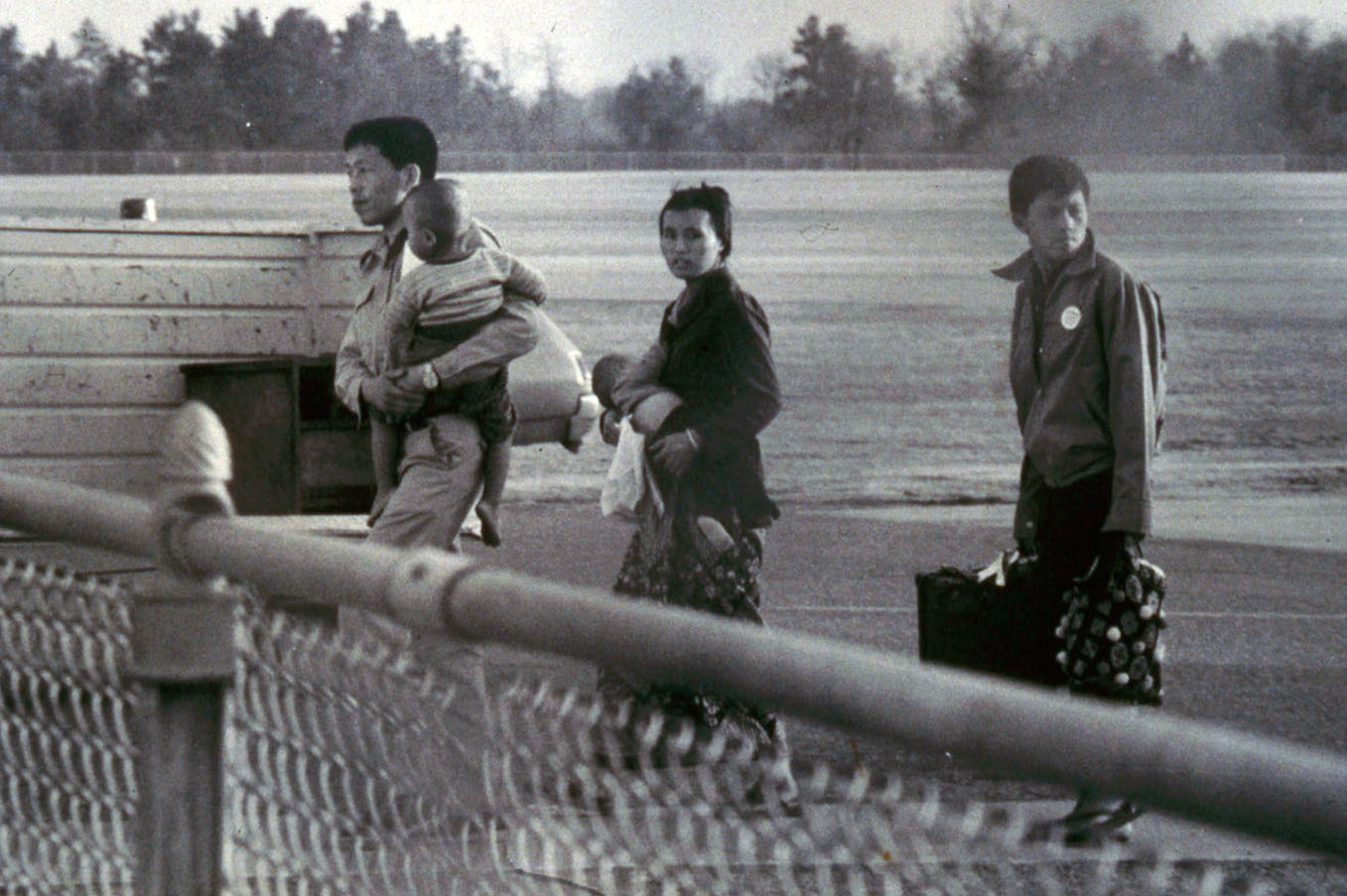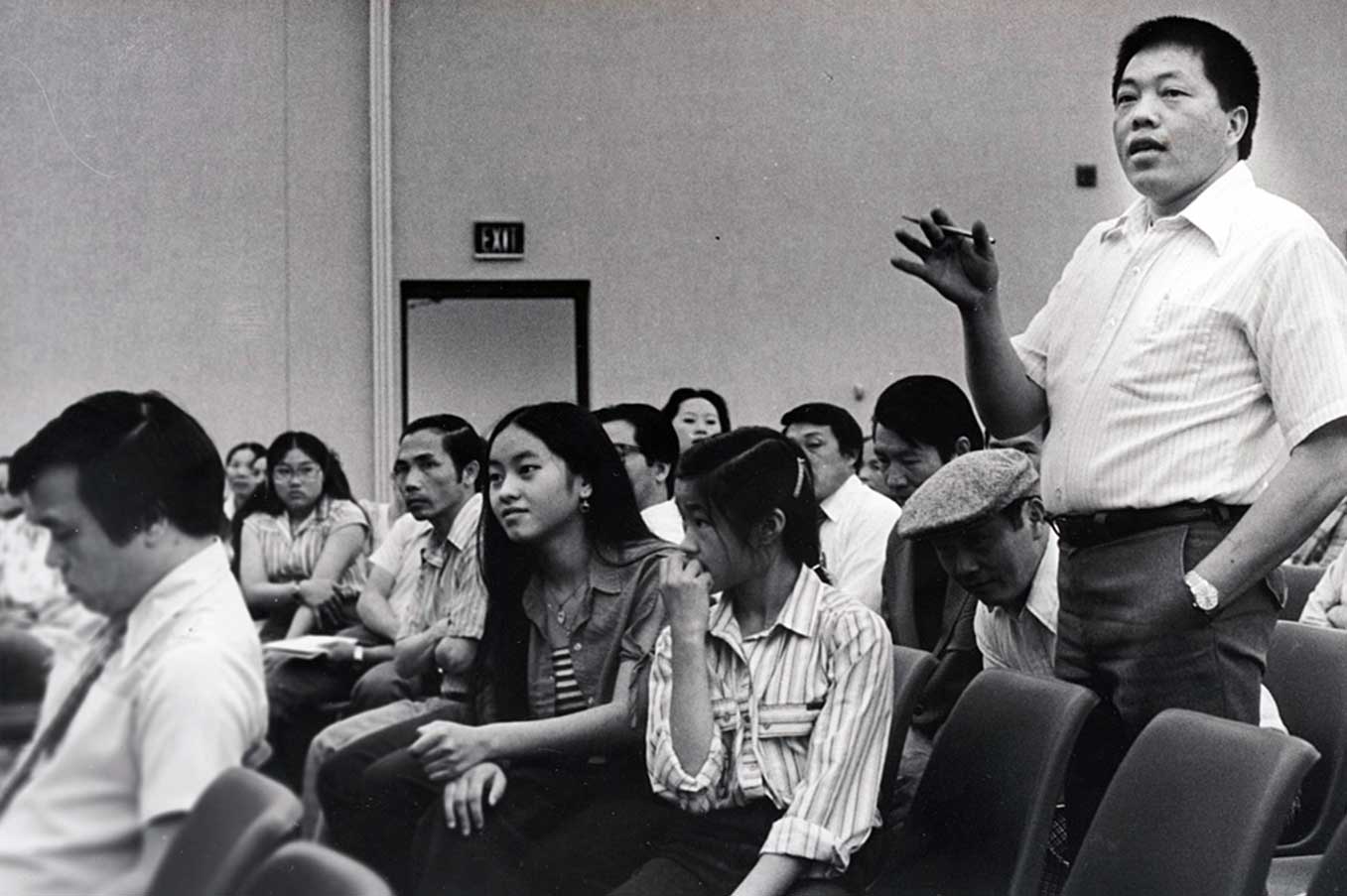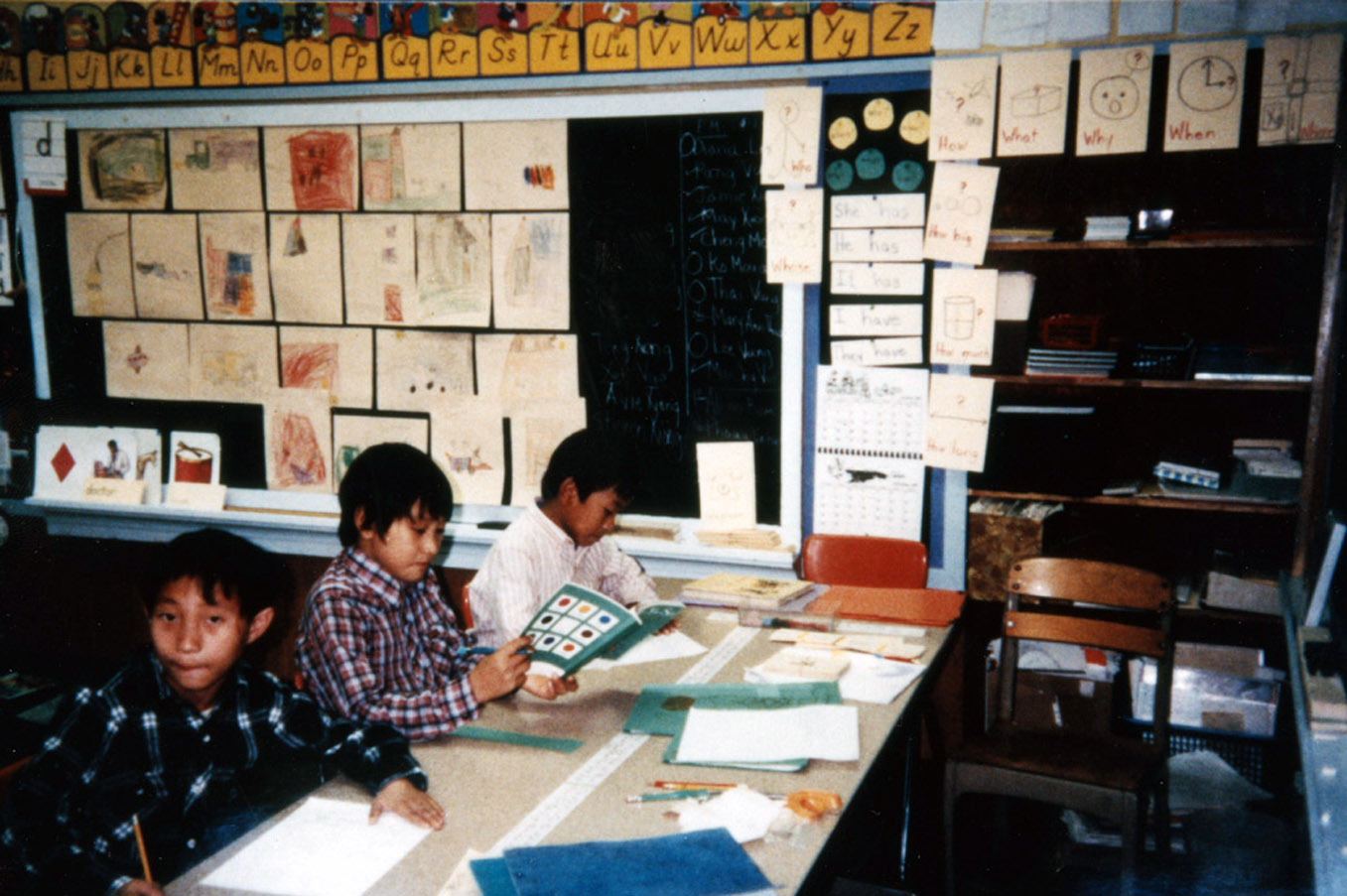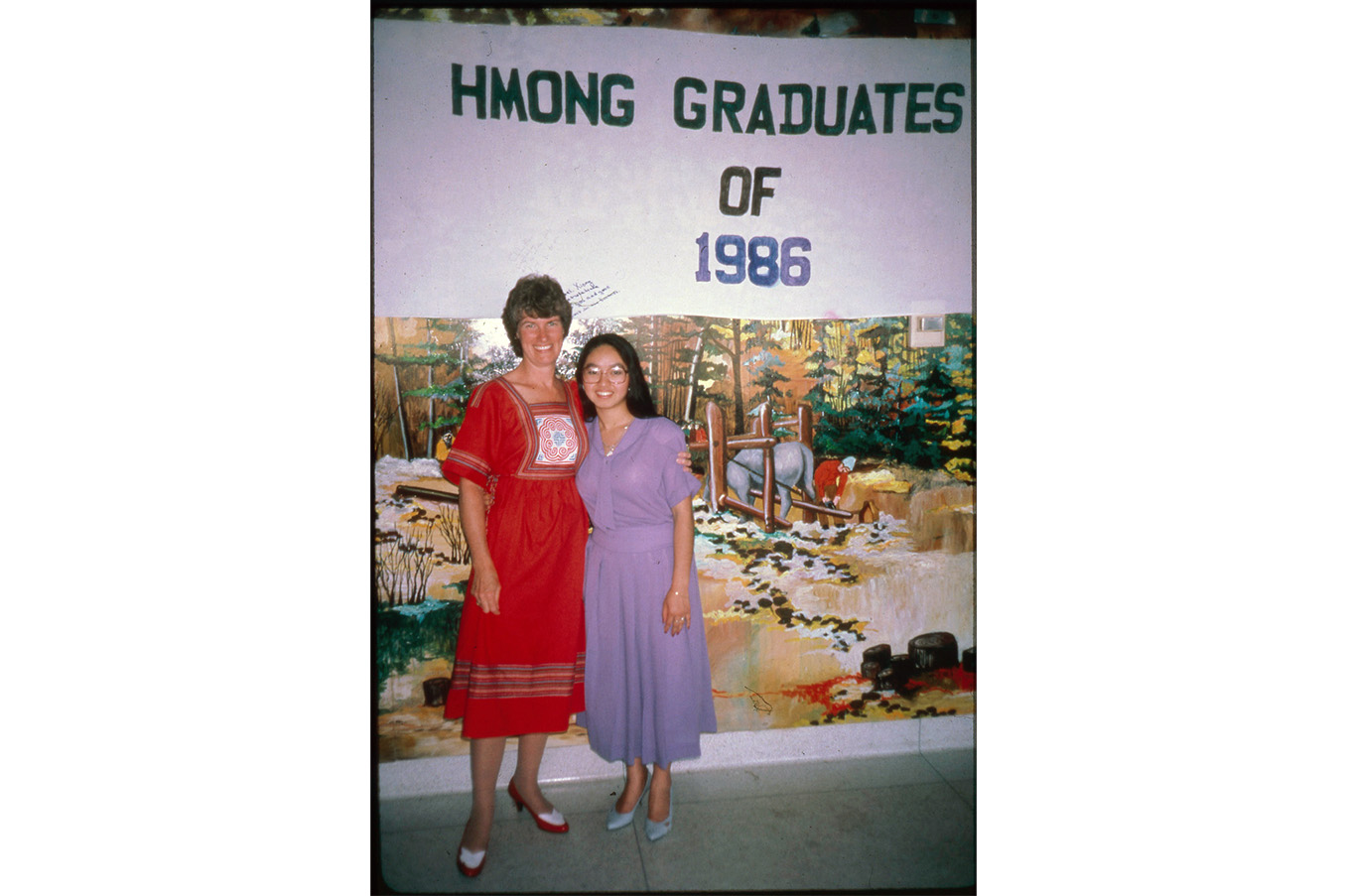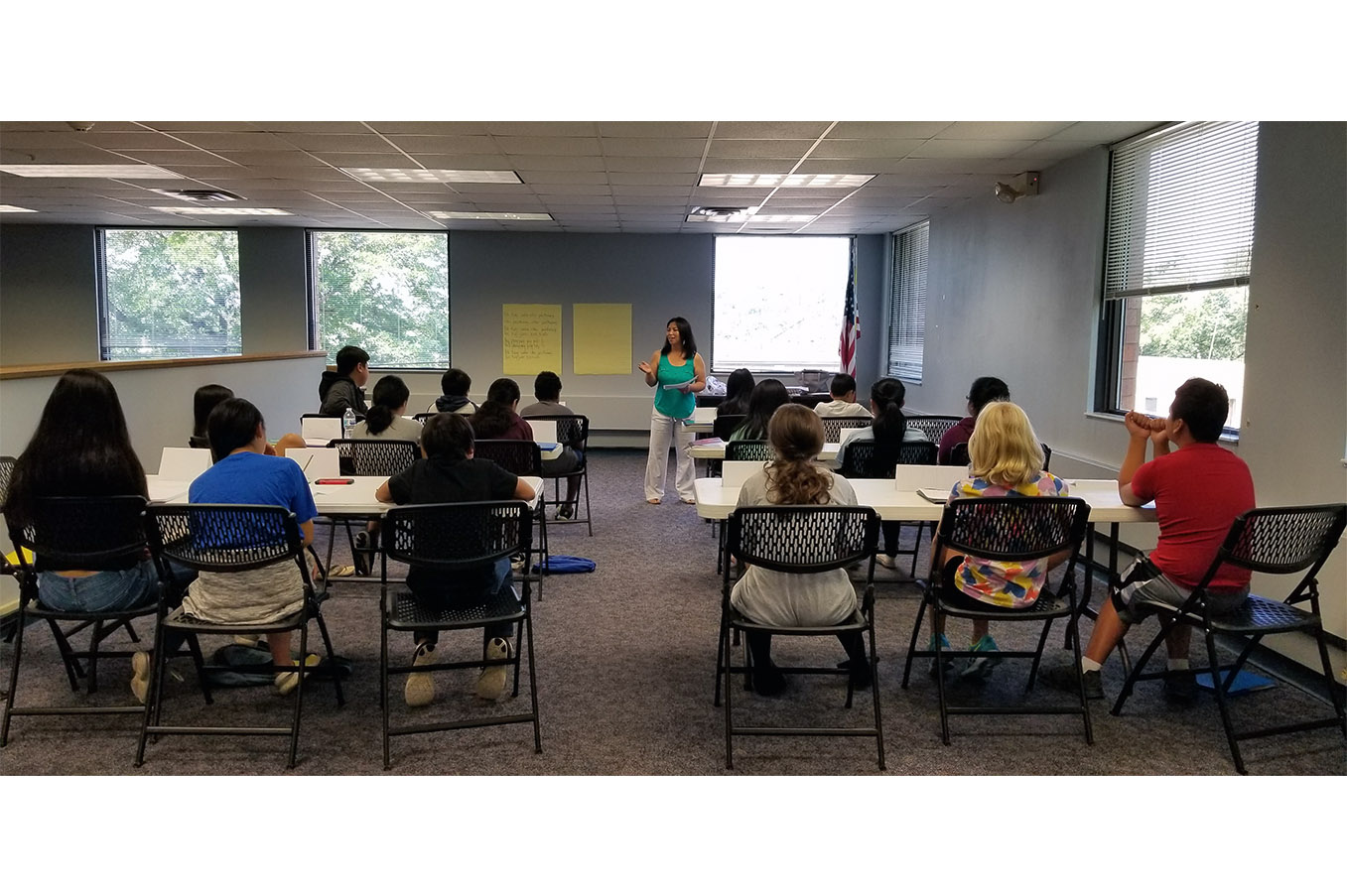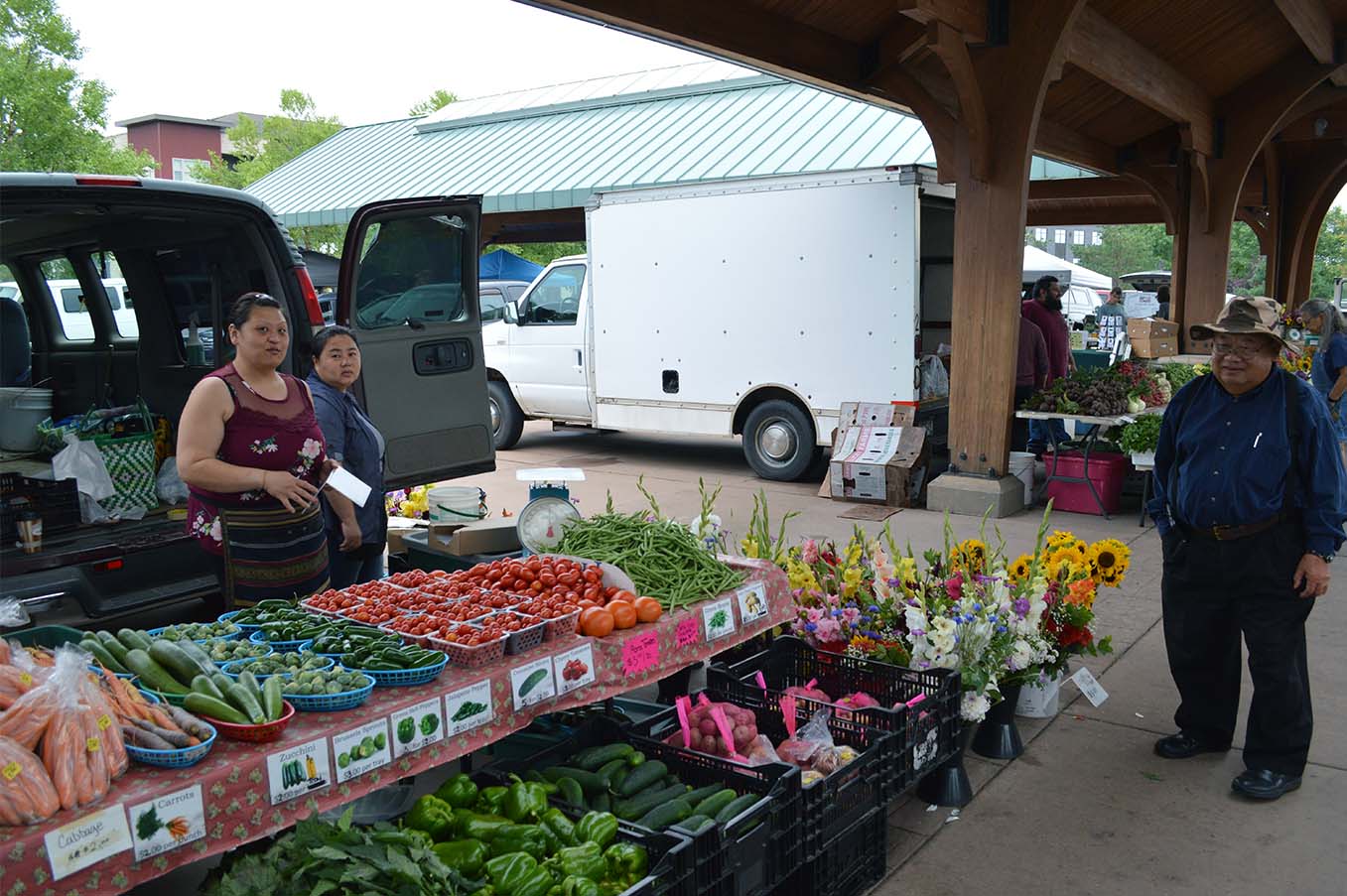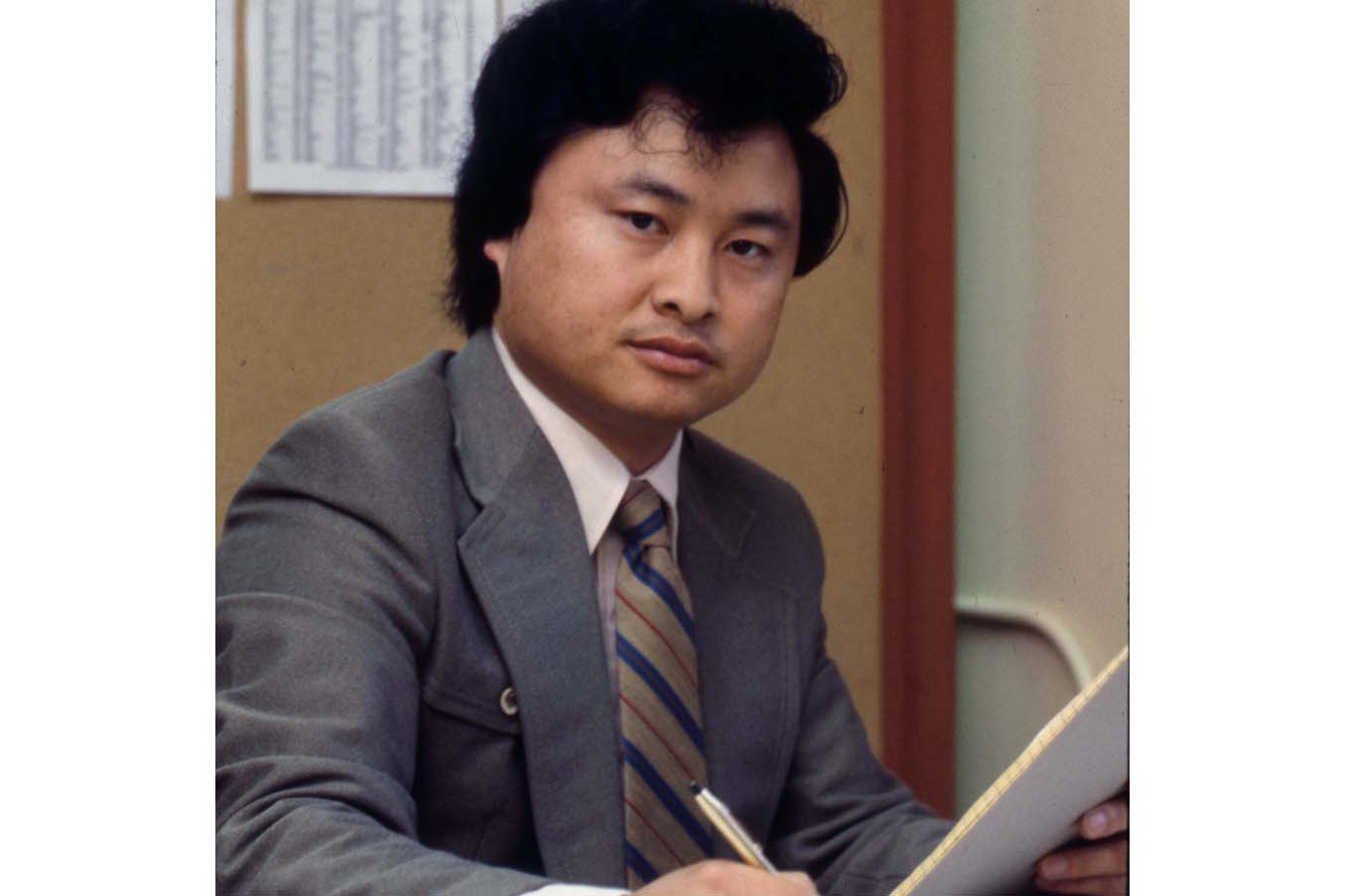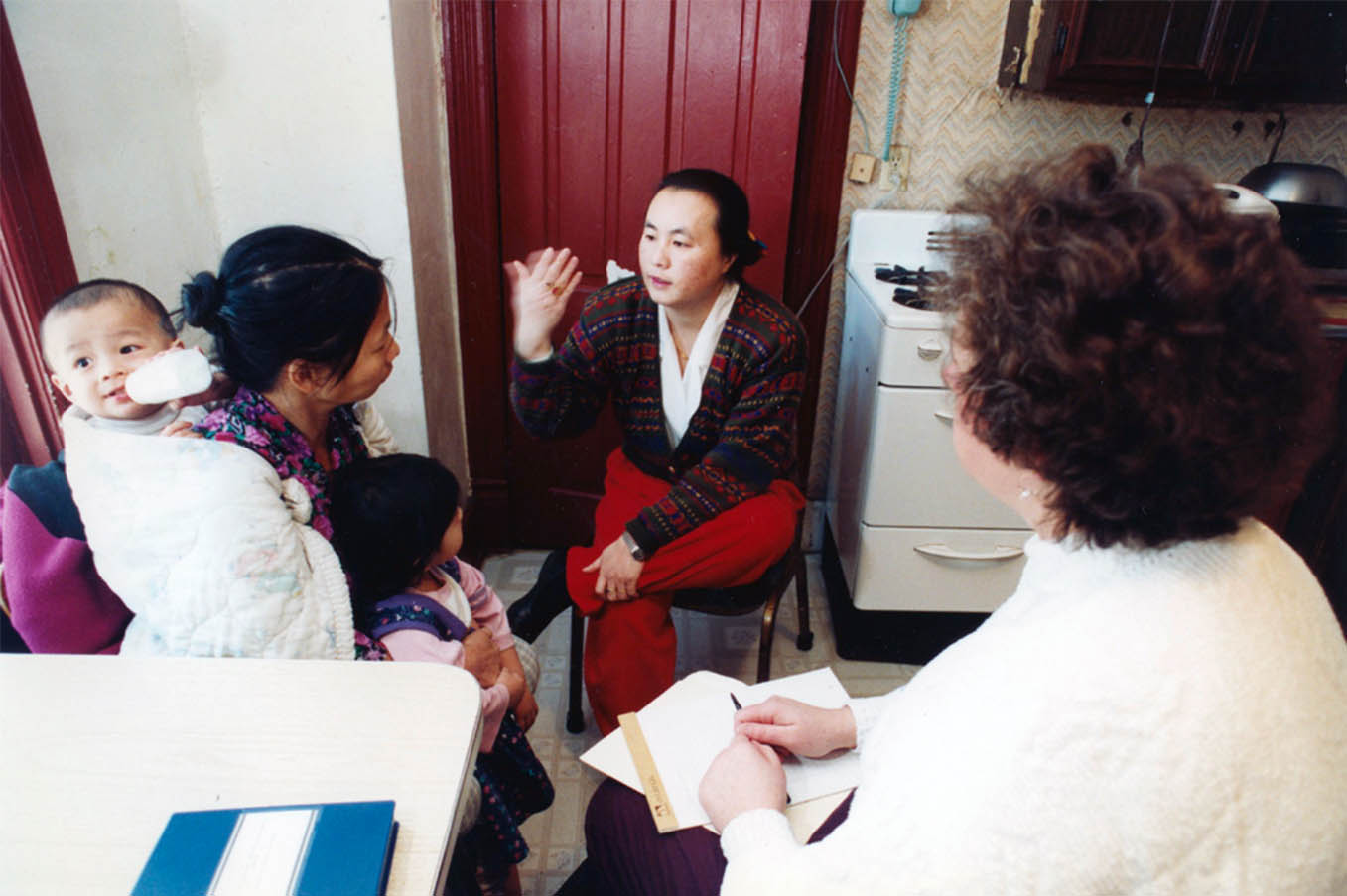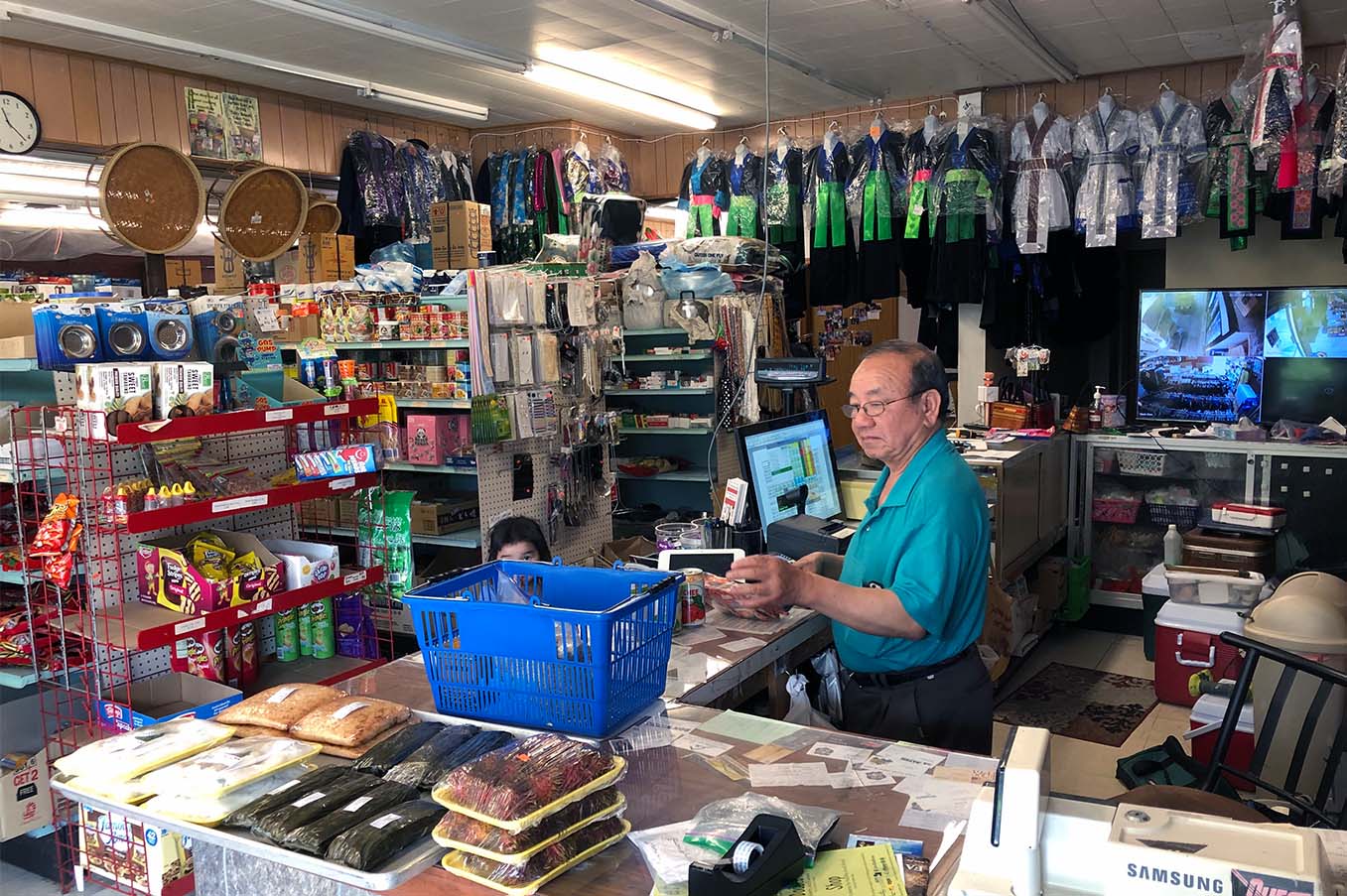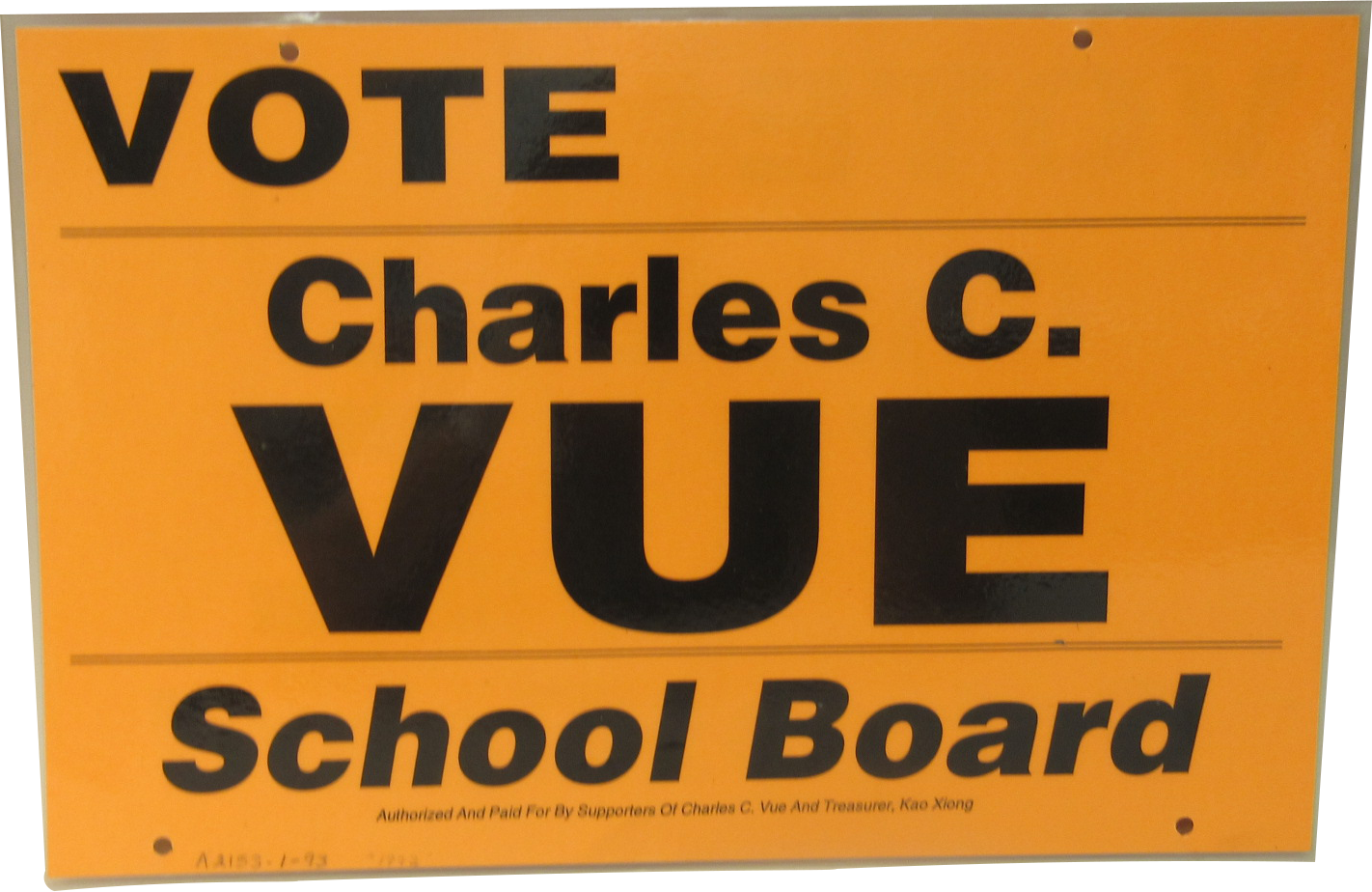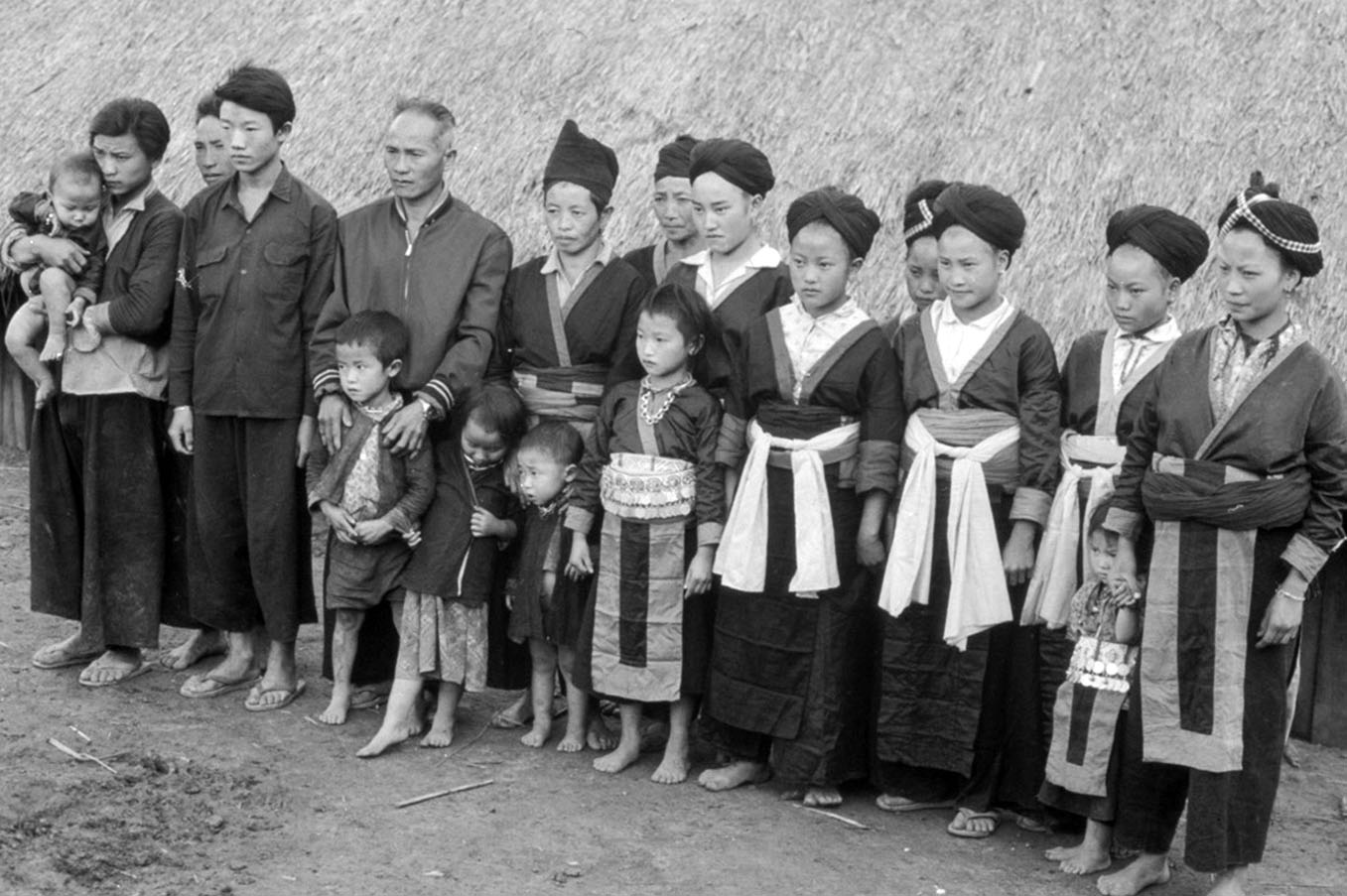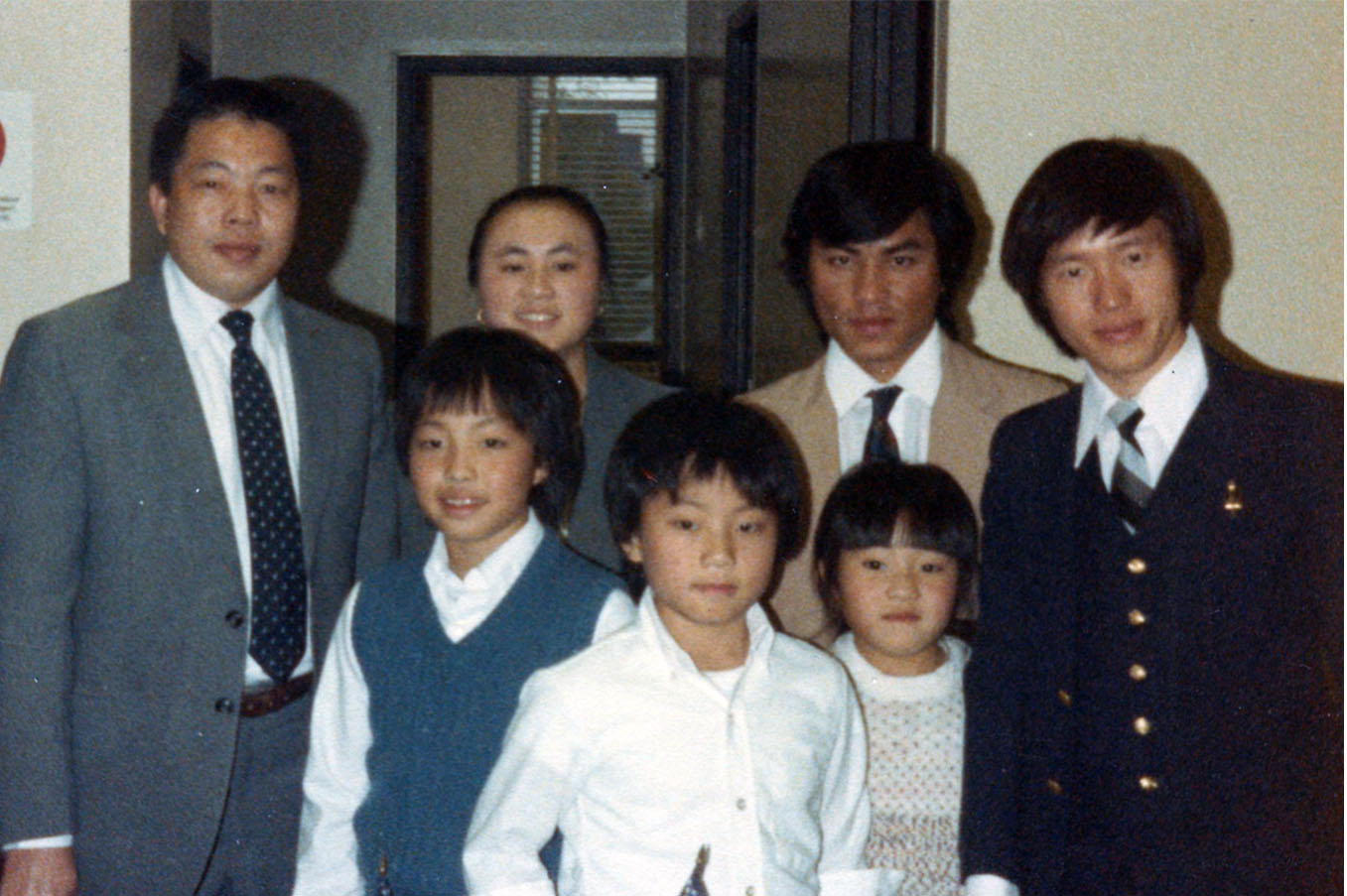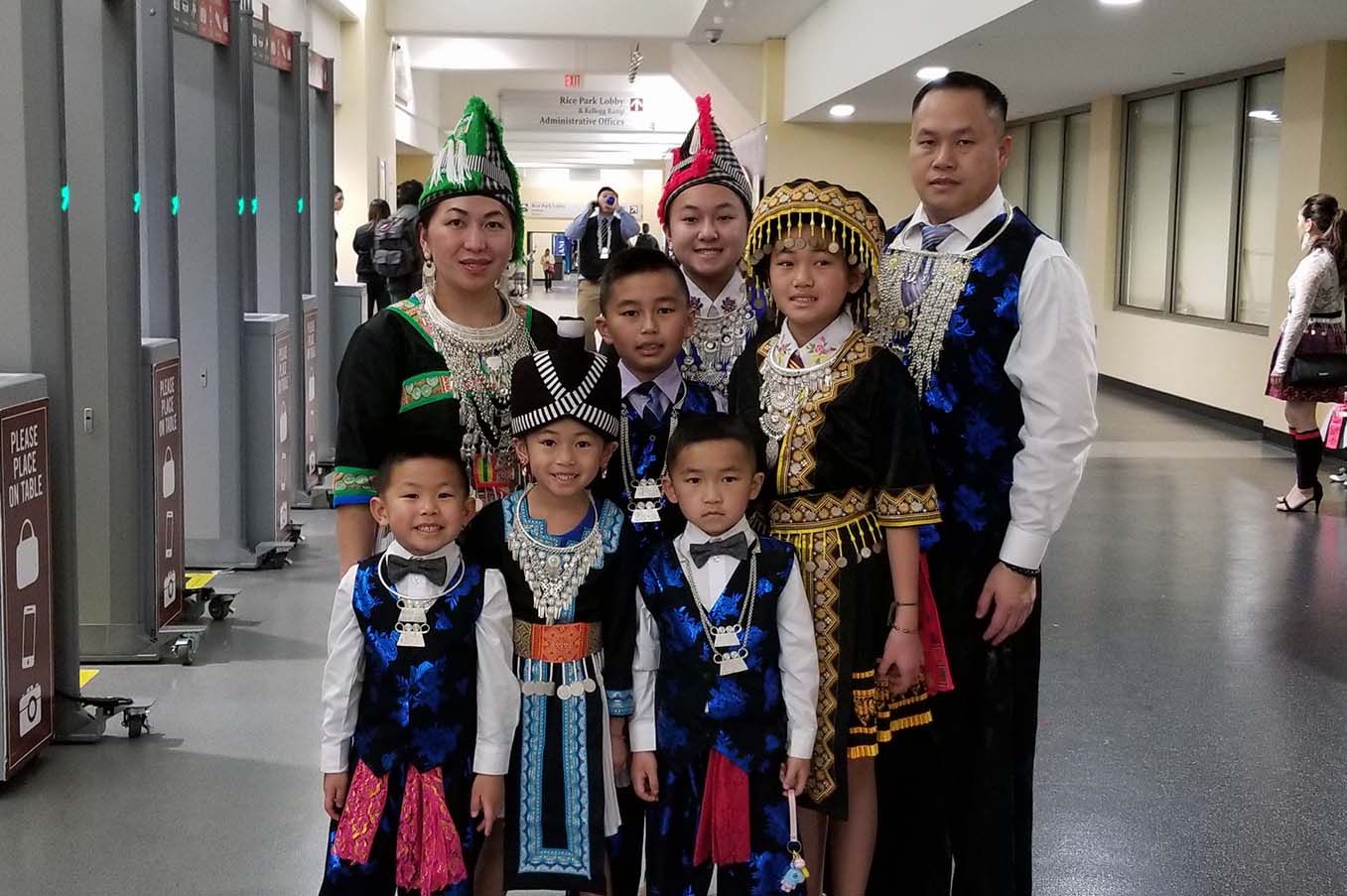Choose a Gallery:
Exhibit Home | The Secret War | A New Home | Religion & Traditional Ceremonies | Traditional Arts
“I’ve lived here longer than I lived in Laos, so here is home now.” — Houa Vue Moua, 2011
Journey to Eau Claire | Hmoob Tsiv Los Nyob Rau Zos Dej Ntshiab
As political refugees, Hmong families were eligible for resettlement under international law, and were also eligible to become naturalized citizens in their new country. Several countries resettled Hmong refugees, including the United States, France, Canada, and Australia. More than 100,000 Hmong refugees resettled in the United States. The U.S. Department of Health and Human Services worked with private local agencies that volunteered to sponsor Hmong refugees. California, Minnesota, and Wisconsin have the largest Hmong populations in the United States. New arrivals to Eau Claire faced major adjustments to a new culture, language, and climate, in addition to separation from extended family.
Vim kev ua tsov ua rog luag thiaj tso cai rau Hmoob tuaj nyob rau teb chaws Asmeskas, thiaj muaj coob tshaj li 100,000 tus Hmoob khiav tuaj nyob rau teb chaws Asmeskas. Hmoob pib khiav tuaj nyob rau teb chaws Asmeskas xyoo 1975. Hmoob yog ib co neeg tawg rog tuaj nyob teb chaws no vim yog kev ua tsov rog pab Asmeskas nplua tsov rog hu hais tias Secret War nyob rau hauv Nplog teb. Niaj hnub nim no muaj khwv yees li 4.5 feem pua (4.5%) ntawm neeg Hmoob nyob ntiaj teb no yog nyob rau teb chaws Asmeskas hos muaj khwv yees li 3,000 tus Hmoob nyob rau hauv lub zos Dej Ntshiab no. Lub sij hawm Hmoob khiav tuaj txog hauv lub zos Dej Ntshiab lawv kuv ntsib kev nyuaj siab ntau yam xws li tsis paub luag txoj cai, tsis paub lus, tsis paub txog kev noj kev haus thiab tsis swm tej huab cua. Tsis tas li ntawv xwb lawv tseem tso vaj tso tsev, tso kwv tso tij, tso neej tso tsav coob leej ntau tus rau tom qab uas yog ib qho kho siab heev. Raws li paub mas niaj hnub nim no (Xyoo 2019) Hmoob tseem yog cov neeg txawv teb chaws nyob coob tshaj ntawm ib cheeb tsam lub zos Dej Ntshiab no.
“[My mother] was afraid that she and I would never see each other again. So, leaving Nong Khai [refugee camp] for Bangkok, Thailand to come to Eau Claire was almost like a funeral. I can compare myself to a person who was taken out from the funeral to be buried in the cemetery. It was that difficult.” — Houa Vue Moua, 1993
“Imagine when we came. We came from a place like in the 1920’s—no electricity, no communication. You never see what America is like, … but all we heard is that this is the place where they would take care of us and they would help us and we would be safe. And so that was good enough for us.” — Blia Vang Schwahn, 2008
“When I came to the United States and when I landed in Eau Claire, it was very different. It was weird, it was very weird. We got to Eau Claire December 1st and everything was white and I wondered how do we live on this white land? There’s no land.” — Mai Xee Xiong, 2014
“When we came [to the U.S.], we experienced some racism and discrimination, so that created a lot of stress as well, but since I’ve been here for a while, I’ve kind of adjusted to it.… There’s one time that my dad and I were walking down Barstow Street, and there were kids that spit on my dad’s face, and that wasn’t really good. In our culture, we’re supposed to respect the elders, but when we came here, that stuff happened to our elders, and it was hard. But I haven’t seen anything like that lately.” — Chao Xiong, 2018
-
Language Skills | Kev Kawm
Hmong refugees of all ages attended English as a Second Language (ESL) classes in Eau Claire. School-aged children learned quickly. In 1985, the Eau Claire Area School District improved instruction by hiring bilingual teaching assistants. Hmong adults studied ESL and Community Living Skills at the Chippewa Valley Technical College along with classes ranging from welding to data entry. Today, Hmong American adults struggle to pass on their first language to younger generations. A summer Hmong language program and the development of a course in Hmong history and culture have begun to formalize efforts to keep the language alive.
Cov Hmoob ua Thoj Nam tawg rog tuaj nyob rau lub zos Dej Ntshiab tsis hais tus hlob tus yau kuj tau mus kawm ntawv Asmeskas. Cov me nyuam uas tseem yau yog ib co kawm tau sai heev. Xyoo 1985, cov tsev kawm ntawv nyob rau hauv lub zos Dej Ntshiab no kuv pib muaj Hmoob mus pab qhia ntawv thiab txhais lus nyob rau hauv tsev kawm ntawv. Cov laus kuj mus kawm hais lus Asmeskas thiab kawm ua hauj lwm nyob rau lub tsev kawm ntawv Chippewa Valley Technical College. Nim no ces tej niam tej txiv twb qhia tsis tau tej me nyuam hais lus Hmoob li lawm, yog li ntawv cov tsev kawm ntawv thiab Koom Haum Hmoob nyob hauv zos Dej Ntshiab thiaj tau tsa muaj kev kawm qhia tej tub tej ntxhais xyaum hais lus Hmoob thiab kawm txog lawv tej keeb kwm rau thaum lub caij ntuj sov (summer).
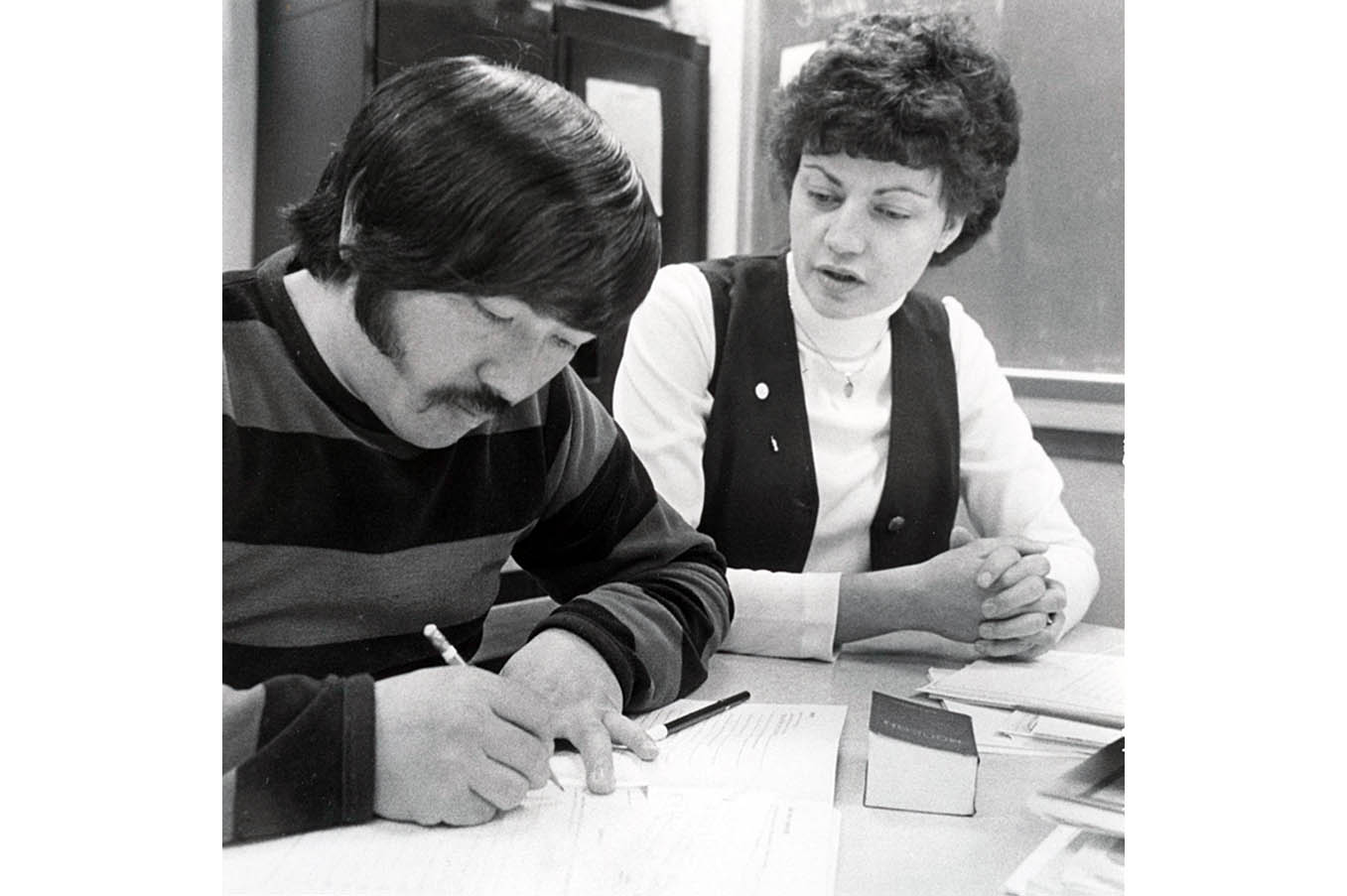 Kou Yang receives instruction from Judy Hamre at the Chippewa Valley Technical College (CVTC), 1980. Courtesy Eau Claire Leader-Telegram.
Kou Yang receives instruction from Judy Hamre at the Chippewa Valley Technical College (CVTC), 1980. Courtesy Eau Claire Leader-Telegram.
“[I was sixteen, but] they placed me in the sixth grade to just learn English. It had been a week that I went to school, and then my teacher asked me what do you have for breakfast? And I always said cookies and milk.… They were thinking what is our sponsor Father Renée doing, feeding this family? They kind of investigated our sponsor, and I was so shocked and I was so scared. The police came and talked to me, but I don’t know anything and [we didn’t have an] interpreter. So I finally I said that is the only two words I know, and then everybody was laughing.” — Jennifer Vue, 2018
“The changing of the language, I think is a big part of our life here because everyday, no matter what you do, where you go, you speak English mostly. And it is rapidly changing for our children, our youth. They go to school, they learn everything from school, they go to a movie, to the mall, and with their friends they speak English mostly.… because everyday living is changing and the language is disappearing for some of the young people.” — Yong Kay Moua, 2011
“We have to continue to keep our culture as long as we can, and try to teach our children to speak Hmong as much as we can. We can’t just let them go. We have to keep them, so that is what I want to do now, and I want to continue teaching the language and the religion and some of the traditions.” — Jennifer Vue, 2018
-
Making a Living | Kev Khwv Noj Khwv Haus
For many Hmong American adults, strong skills and experiences as farmers, soldiers, or leaders in Laos did not transfer into stable occupations in the U.S. Younger adults, better able to adjust to American systems, emerged as new leaders, starting businesses and running for political office. They also formed the Eau Claire Area Hmong Mutual Assistance Association (ECAHMAA) in 1982 to support new arrivals and provide job and translation services. Today, the ECAHMAA is the only agency in the region that provides services specifically for Hmong families.
Cov Hmoob uas ib txwm yog neeg ua liaj ua teb, yog tub rog, thiab yog ib co coj noj coj ua nyob yav ntuj qub qab kuj tuaj khwv noj khwv haus tsis tau rau lub teb chaws Asmeskas no lawm vim tej hauj lwm nyob rau teb chaws no txawv yav ntuj qub qab. Cov hluas yog cov pauv tau sai rau lub teb chaws Asmeskas no ces lawv kuj los ua tau tus coj, muaj kiab muaj khw, thiab los nrog luag khiav tau ua nom ua tswv. Lawv los tsim muaj lub Koom Haum Hmoob hu ua Eau Claire Area Hmoob Mutual Assistance Association (ECAHMAA) hauv zos Dej Ntshiab no rau xyoo 1982 yog tsim los pab txhais lus rau cov Hmoob tuaj tshiab. Niaj hnub nim no ces lub Koom Haum Hmoob no thiaj tseem yog lub koom haum tsim los pab tsev neeg Hmoob nyob thaj tsam ntawm no lawm xwb.
“I started my life [in Eau Claire] with everything new. My past experience as a soldier or serviceman, there was nothing related that it could work over here. Nothing in my background could help me…. I’m glad that I could start my new life here…. Now I'm really proud of myself that I can help my family. I was the first person in my family to work.” — Joe Bee Xiong, 1992
“Those who have interest still are good farmers and they are selling at the farmer’s market. Those who have an interest in business, they have a few local businesses in town, and those who have an interest in education, there were a few who received doctors’ degrees…. More people now have a reduced family size from large families to small families. I’ve seen a lot of things change besides, before a lot of people used to live in the low, low public housing and now more people own their own home, and some Hmong even have units for rent for other people…. So I see a lot of things change.” — Houa Vue Moua, 2011
“It was in 1991-92 that I ran for school board. During that time we didn’t have a person in Eau Claire that is Hmong and did that sort of thing. In my mind I want to integrate Hmong and Caucasian people, and one way to do that is to run for office…. I always grew up wanting to be a middle person so I can bridge the two cultures, Caucasian community and Hmong community. That’s why I went into social work to begin with. So I had about 5,000 votes behind me, but there were incumbents who were in the school board that were well liked, so they won the seat. But other Hmong in the Eau Claire community saw that Charles can do it, we’ll do it. Charles can run for office, we’ll try too. So they followed in my footsteps.… So since that time until now, every year we have a Hmong person being a city council member.… So I may not get the seat but I inspired others.… Because I didn’t get the seat someone else was challenged to do better.” — Charles Vue, 2008
-
Clan & Family | Caj Ces Thiab Tsev Neeg
At the center of Hmong society lies a strong patrilineal clan system. In Laos, three generations often share a household, and ten to thirty families might live in a village. The eldest male head of household generally serves a leadership role within the family, and women hold little political power and join the family and clan of her husband. While clan and family bonds remain an integral part of Hmong traditional practices in the U.S., increased access to education and new occupational opportunities are changing traditional gender roles. Though extended families may no longer live in the same community, family members are finding ways to stay connected.
Hmoob ib txwm nyob ua pab ua pawg raws caj raws ces. Yav ntuj qub qab tim Nplog teb mas tej niam txiv, tub nyab thiab xeeb ntxwv los tseem nyob ua ke rau ib lub tsev. Ib lub zos twg tsuas muaj li ntawm 10 mus rau 30 yim xwb vim lawv nyob raws pab raws pawg. Tus txiv neej laus tshaj hauv ib tsev neeg twg ces yog tus coj hauv tsev neeg ntawv xwb. Cov poj niam ces tsis tshua muaj feem xyuam ua tus coj rau hauv nws tsev neeg los yog rau lub zej lub zos. Nyob rau teb chaws Asmeskas no txawm Hmoob tseem nco tias nws muaj caj muaj ces thiab tsev neeg tseem ceeb los vim kev kawm ntaub kawm ntawv thiab kev khwv noj khwv haus kuj ua rau sawv daws pauv ntau yam lawm. Tej tsev neeg kuj tsis nyob ua ke rau ib lub zej lub zos lawm vim kev nrhiav noj nrhiav haus tab sis lawv tseem muaj kev sib nug hmoo tau thiab.
“I never went to school [in Laos]. Because back then in the Hmong culture there was a more of a male dominant culture, and so if a family is rich and they can afford to they would send their boys to a school.... The girls learned how to cook and how to work around the house and eventually they were just learning to be a good wife to somebody. But the sons were the ones who were going to take care of the family name, they were going to be in charge, they were the ones that were educated.” — Blia Vang Schwahn, 2008
“However, with the current society here in the United States, we have a lot of Hmong women in the workforce, so that changes the role. So we may not always be able to tend to the family needs. For example, if we have in-laws, we may not be able to cook and clean all the time. We may not always be able to go to extended family’s events because of work, or we may not be able to give them more time than we used to because of work. And the society has changed now that we have children, our children go to school and we have to tend to their needs, too. So the roles have shifted a little bit. I know some Hmong men are contributing to helping with domestic chores. We still have other men that are not willing to let go of that.” — Sia Yang, 2018
“Right now with technology, with phones, Skype, Facebook, and all the social media stuff, it allows families to be more connected although they don’t live physically together…. I haven’t really seen families being disrupted because they live far away from each other. They are always connected one way or the other.” — Sia Yang, 2018
-
References
Koltyk, Jo Ann. New Pioneers in the Heartland: Hmong Life in Wisconsin. Boston: Allyn & Bacon, 1998.
Pfaff, Timothy. Hmong in America: Journey from a Secret War. Eau Claire, WI: Chippewa Valley Museum Press, 1995.
Vang, Chia Youyee. Hmong in Minnesota. St. Paul: Minnesota Historical Society Press, 2008.

